|
While there are many things to love about autumn here in the northeast - apple picking, football, foliage - it is also the perfect time to travel abroad. Fall usually means fewer crowds, more comfortable temperatures and stellar weather for exploring outdoors in both the northern and southern hemispheres. Here are five of my favorite fall destinations: I spent about three weeks in China last October and almost every day was perfection. Beijing, known for its relentless smog, is supposed to be clearest and cleanest in October and it did not disappoint. Autumn brings colorful foliage in the northern countryside resulting in spectacular views from the Great Wall. It is warmer farther south, but not oppressively hot. Shanghai's weather was incredibly comfortable requiring a tank top by day and light jacket at night. My favorite place in China - Yangshuo - offered 70 degree F days, perfect for biking through the karst mountains. While October is a great month to explore China, be sure to avoid the first week as it's a national holiday called "Golden Week", when prices and crowds skyrocket across the country. Read more about my adventures in China here. While Paris is beautiful any time of year, I especially love autumn. The crowds are significantly reduced since all the students are back in school, and while the temperature can sometimes be a bit chilly, it's usually great for long walks around the city. We walked and biked all over Paris and Versailles and the cool air gave us plenty of motivation to continue moving! Autumn is also the perfect time to enjoy a warm drink at an outdoor cafe. Nothing goes better with a glass of Bordeaux than a cozy sweater. Read more about Paris here. The high season for Koh Lanta - and the rest of the islands along the Andaman Sea in Thailand- is November through April. We were there in late October/early November which is technically "shoulder season" - the end of the low season and beginning of the high season. This meant great deals and fewer crowds. For example, we had no problem booking hotel rooms or scuba dives a day in advance. We only had one weather woe - a rain downpour that lasted about an hour. The rest of the week brought sunshine, warm breezes and spectacular sunsets. Interested in visiting Koh Lanta? Check out our guide to Koh Lanta. While it's been almost ten years since we've been to Ireland, we still talk about that vacation. The weather was marvelous for hiking and pub crawls - two of Ireland's best pastimes. The cooler temps meant we could hike without getting too hot and also suited the cozy cavernous pubs scattered throughout the countryside. Like the northern US, mid-October is the height of colorful foliage which looks extra beautiful surrounding Ireland's castles, stone walls and green hills. Definitely check out Galway, the Ring of Kerry and the Dingle Peninsula this time of year. If you like stunning views, friendly locals and pub food you will not be disappointed! Since Australia is in the southern hemisphere, their seasons mirror ours in the north. Therefore, Australia experiences spring during the months of late September, October and November. Queensland summers are hot & humid and monsoon season begins in late November through April. I think we visited during the best time of year - late September/early October. With the exception of a freak wind storm in Airlie Beach, the weather was beautiful and the water visibility was incredibly clear which made for phenomenal scuba diving. While the water in New South Wales required a wet suit, the crisp, sunny days were perfect for hiking and walking around Sydney. Considering a visit to Australia? Read our tips for driving up Australia's east coast and for more general Australia information see our Australia information page.
0 Comments
This spring, I'm making a few changes to my home and garden and I'd like to incorporate elements inspired by our recent trip around the world. Although I can't plant exotic tropical flowers in Boston, nor do I have the space for nest beds, I can look for a few pieces that remind me of some of my favorite places. So, in no particular order, here are a 15 things from around the world that would be fun to replicate at home. 1. Bangkok, Thailand: Nest Beds Nesting has taken on a whole new meaning in Bangkok. The shape of these human sized sanctuaries will make the most boring of outdoor spaces intriguing. Add a light inside and create glowing garden sculptures at night! 2. Hamburg, Germany: Modern Rococo I'm typically not a fan of rococo and prefer balancing frills and flourishes with corners and crisp lines. However, I reveled in this little cafe in Hamburg, sipping my chai tea slowly while sinking into a cozy velvet couch. I have no idea if they intentionally distressed the walls or if they just spruced up a derelict space with vintage couches from Oma and Opa's house. Whatever they did, it worked. 3. Cappadocia, Turkey: Canvas & Carpet Covered Terraces While in Turkey, we spent two glorious mornings having breakfast here, overlooking the cave town of Goreme. I've been thinking about using canvas to provide shade on my deck during the hot summer since it's pretty easy to put up and take down. I also love the rug covered table for extra lounging. 4. Cambodia: Colored Wooden Blinds These colorful blinds would add cheer to any space such as a nursery, kitchen or my home office. Photo by Eva Barbier from the blog post: Waterworld: The Floating Village of Kompong Phluk, Cambodia 5. Yangshuo, China: Wagon Wheel Benches Check out these benches at our Inn in Yangshuo. They are made by attaching local wood planks to an axle and wagon wheels. This set-up is a charming alternative to a traditional picnic table. Photo by Eva Barbier from blog post: Days 167-170: Yangshuo, China - Hiking and Biking the Karst Mountains 6. Koh Lanta, Thailand: Bamboo Lounges & Pyramid Pillows Koh Lanta is one of the places i miss most often because we found total relaxation here. Perhaps it's because bamboo lounges and beds are scattered along the beaches, waiting for a wanderer to plop down for a cold beer and a little shut eye. The colorful pyramid pillows are a nice touch, and help prop up one's head in order to enjoy the sea view. I don't think bamboo would last in the harsh Boston weather, but if i ever live somewhere milder I plan on creating my own little slice of Lanta. Photo of The Indian bar in Koh Lanta by Eva Barbier from Our Guide to Koh Lanta, Thailand 7. Ubud, Bali: Stone & Wood Carvings Bali is full of insanely talented artisans and artists that have been perfecting their craft for generations. We visited gardens, homes and temples full of intricately carved statues and furniture. Two of my favorite pieces were these Balinese women who seem full of happiness and peace. Generally, this is how I feel after a really good meal. They would look lovely in my garden and remind me of the warmth and hospitality we experienced in Bali. Read more about Bali here: Ubud, Bali - The Barong Dance, Stone Carving & The Awe-Inspiring Contact Lens 8. Melbourne, Australia: Bold Tile This tile covered the inside of a bench shelter in Melbourne. It was a pleasant surprise, since the structure was grey on the outside. I thought the pattern would make a nice outdoor table top. 9. Kruger Park, South Africa: Drapery Over Doors The decor at safari camps is fantastic, but much of what you'd expect from the African bush - typical wood furniture, local animal fur rugs, and lots of neutrals. One thing I really liked was the use of drapery, particularly over doors or entryways. I'm not sure if this has a practical use in the summer (ie keeping bugs out of rooms) but they really made our accommodation, a tent, very homey. 10. Paris, France: Black & White Tile Black and white tile was everywhere in Paris so it always reminds me of my favorite city. I don't know if it's the the tile that contributes to the glamour of Paris or if it's Paris that makes the tile so chic. Let's just say it's a symbiotic relationship. If my bathroom wasn't so tiny, I'd tile it like the picture below. 11. Arrowtown, New Zealand: Recycled Container Garden This is a neat idea for people who have a lot of outdoor space. Arrowtown is an old gold mining town in New Zealand. There was a lot of abandoned equipment from the mining days so local artists used them in their artwork and homes. Here is an old pipe transformed into a container garden. 12. Winelands, South Africa: Chrome+Stone+Wood The wineries in Franschhoek, South Africa are stunning both inside and out. I particularly enjoyed the modern decor of the tasting room at the Gran Provence. The chrome bar and fixtures gave it a sleek modern look which was nicely offset by the rest of the room, comprised of natural elements from the region - stone, clay and wood. While it's void of color inside, the view was bursting with color outside the glass doors. 13. Seminyak, Bali: Colorful Shutters These pretty shutters, spotted in Bali, would liven up a pool house or backyard shed. 14. Chiang Mai, Thailand: Copper Light Fixtures Giant copper lights were suspended from tall tree trunks in our hotel lobby in Chiang Mai. They were especially enchanting when twinkling at night. Perhaps they could be used on a much smaller scale in an entryway, over a dining room table or kitchen island. 15. Caye Caulker, Belize: Weathered Wooden Signs
The tiny Caribbean island is comprised of small wooden structures that have been weathered by the salt and sand in the air. Painted wooden signs were strewn about the island featuring island mantras (Go Slow) and store names. I think these would look great hanging in a bohemian urban garden. Our travels introduced us to many beautiful landscapes, intriguing cultures, questionable food and, well, really odd clothing. Here are the top five bizarre wearables we observed: 1. Beardcap, IcelandIceland's climate is harsh - cold, windy and wet - so one must protect the entire face from freezing, including the beard and mustache. The beardcap does just that. Made from soft lambswood, it is a modern day "lambshed-hood" which was traditionally worn by Icelandic farmers walking long distances to their field sheds. Vík Prjónsdóttir produces these quirky caps which come in two styles - the Farmer and the Gentleman. Read more about our adventures in Iceland here. 2.Human Hair Belts, PeruOn the small island of Taquile, in Lake Titicaca, Peru, the men wear belts made from their wives' hair. A young woman will use her shiny long hair to make a marriage belt which is a gift for her future husband. The bride mixes her hair with alpaca hair and the result is a black and white striped belt that her husband will wear every day for the rest of his life. The belt is sturdy and worn like a girdle so it supports his lower back. They say it helps the kidneys and prostate so in essence the bride is making a belt to protect the health of her future husband. Read more about Taquile, Peru here. 3. Baby Split Pants, ChinaA common sight in China is a toddler missing a critical component of his wardrobe. They call these toilet training pants or split pants, and they feature a big opening in the crotch area (no diaper). The parent/grandparent will regularly fold the kid in half, bum towards the ground, and urge the baby to take care of business. You see it happening everywhere - on the sidewalk, in the park, over a garbage can at the train station, etc. We took extra care to avoid all puddles after seeing this! To read more about China, check out my China blog posts here. 4. Facekinis, AsiaThe people pictured below are not Mexican luchadores or Marvel's latest superheroes. They are Chinese beachgoers wearing a form of extreme sun protection called the facekini. While the Icelandic beardcaps provide protection from the cold, the facekini provides protection from UV rays and jellyfish. In Asia, most people consider tanned skin to be less attractive than pale skin because a tan implies peasantry while pale skin implies you lead a pampered life. We often saw Asian tourists and locals cover up their skin and wear wide brim hats on sunny days. Drugstores advertised skin bleachers as opposed to self-tanners popular here in the US. Well, the facekini takes sun protection to a new level and has grown in popularity among the Chinese, particularly those from Quingdao. While I'm typically happy with sun-tan lotion, I could have used a facekini while snorkeling among Thailand's stinging sea bees! 5. Cat Ears (or any other animal ears on adults), ChinaFemales of all ages in China were sporting headbands with animal ears. Typically they were cat ears but we saw lots of variations - bunnies, bears, mice, and my favorite... giraffes.
We looked back at our initial expectations as to what China would be like, and whether each turned out to be reality or myth. Here are some of the biggies: Expectation: Most Chinese people are short and will be in awe of Chris because he is really tall. Verdict: False. Many Chinese people - in particular Beijingers - are quite tall and were more interested in little ol' me. Expectation: There will be people everywhere. Verdict: True. Crowds galore - everywhere. Expectation: Beijing is a compact city, comprised of old buildings and crowded winding streets. Verdict: False. It's hard to find old neighborhoods in many parts of Beijing, and much of the city is very modern, fancy and spread out. Expectation: There is a lot of pollution. Verdict: True. There was a lot of smog and air pollution in the cities. Often it was difficult to breath when in traffic. Expectation: China will be cheap. Verdict: False. Beijing and Shanghai in particular are quite pricey, even compared to many US cities. Even the countryside, which is cheaper, is not quite the bargain it once was. Also wagyu beef - so not cheap. Expectation: Many websites will be blocked. Verdict: True. We needed to use our VPN to access sites like Facebook and Youtube, and sometimes even that did not work. Google defaulted to the Hong Kong site but sans search ads. Many sites that we tried to click on in the search results were blocked. Expectation: It's very difficult to travel in China without having a guide or knowing the language. Verdict: False. We found it easy, although admittedly did not venture too far off the tourist route, which may have proven more difficult. Many people at our hotels spoke English, which also helped. Expectation: The dumplings will kick ass. Verdict: True. Expectation: So will the Peking duck. Verdict: True, per Chris (I don't eat duck). Expectation: Most people will drive Chinese brand cars we've never heard of. Verdict: False. The big brands seemed to be Volkswagen, Audi, Chevy and Buick. In fact there seem to be a lot more Buicks in China than in the US. Expectation: There will be lots of Samsung phones, and few iPhones. Verdict: True. And their Samsung phones have huge screens. They have really embraced the phablet here. Expectation: There will be a heavy military presence everywhere. Verdict: False. We saw very few members of the military and limited police presence, even in the central areas of Beijing. Expectation: There will be lots of national symbolism and red/gold everywhere. Verdict: True - there is a very heavy use of red and gold, both for nationalistic displays/pride and for everyday decoration. There are also lots of people who wear national symbols - green hats with red stars, flags, army green jackets. Expectation: Chinese people are very superstitious. Verdict: To some degree, true. As one example, most buildings still do not have a floor #4 or #14. Expectation: Eastern medicine is heavily utilized. Verdict: True. Herbal and homeopathic treatments occupied the bulk of the shelf space at most pharmacies. Expectation: They eat EVERYTHING. Verdict: True. And we'll leave it at that. After our visit to China, we thought it would be fun to recap a few tidbits that made us laugh, think, or just scratch our heads. 1. Street-sweepers in Guilin blast It's a Small World while they're driving around. Kind of like ice cream trucks in the US, but they drive even slower. Just when you thought driving a street-sweeper around all day couldn't get any worse, boom - you have to listen to It's a Small World on continual loop while people on the street give you the death stare. This must be one of Dante's stages of hell. 2. The Chinese love to take photos. In particular, they love to take photos of whatever you are taking a photo of. If you are admiring a view and taking a photo, someone will be waiting there to take your spot and capture the exact same shot (not from a foot to the right or left, but from exactly where you were standing). We tested this theory by taking photos of mundane subjects such as phone booths or old plastic chairs. Sure enough, someone would be waiting to snap a photo of the same object when we were done! 3. One day at breakfast in the hotel dining room we heard a familiar tune from our distant past. They were playing the instrumental theme from Kindergarten Cop. We thought this was hilarious. 4. Nearly all the ads feature Western models - even those for Chinese brands. It's very rare to see ads using Asian models which is really peculiar. There are so many beauties in China, I could have picked out ten runway models in one day in Beijing. 5. In Shanghai, a man selling music sits on the street corner near the Grand Central Hotel. He blasts Bette Midler's The Rose every day on repeat ALL DAY LONG. We had a few theories about why he did this: - It's his favorite song. - He tested various tracks one week and The Rose was the one to lure in the most sales. - Our hotel pays him to help patrons who get lost easily...just follow Bette's voice! 6. A common sight in China is a toddler missing a critical component of his wardrobe. They call these toilet training pants or split pants, and they feature big opening in the crotch area (no diaper). The parent/grandparent will regularly fold the kid in half, bum towards the ground, and urge the baby to take care of business. You see it happening everywhere - on the sidewalk, in the park, over a garbage can at the train station, etc. One can't help but wonder why it doesn't happen over the toilet? Anyway, we took extra care to avoid all puddles after seeing this! 7. Cat ears are in. You often see gaggles of teenage girls sporting them. We were admittedly a little jealous at times. 8. There is no shortage of toothpaste. In addition to the normal hotel toiletries, it is commonplace for Chinese hotels to provide you a dental kit, consisting of a toothbrush and tube of toothpaste each day. Of course, we amassed a stockpile for the rest of our trip.
After an amazing few days in Yangshuo, we bused it back to Guilin for our final two nights in China. We thought we'd check out the Longji Rice Terraces the next day, however we found out that the terraces had been recently harvested, which meant the views were not spectacular. The terraces are also about a 2.5 hour drive away, and require a private driver for the day (if you don't want to go on the organized tour, which we didn't). So, we decided to pass on this altogether and spend the day kicking around Guilin. Here are a few of the things we saw in this mid-sized city in south-central China. Temple Buffet We had read about a great vegetarian restaurant in downtown Guilin so we decided to check it out. We found it behind one of the Buddhist temples which didn't surprise us as we have learned that most vegetarian restaurants in China cater to monks. The place was was jammed packed with people. We figured it must be good if all the locals were flocking there so we gave it a try! Tea Ceremony We had been in China for 2 weeks and had not yet attended a tea ceremony. We had to try it before we left, so we stopped by our hotel's beautiful tea house one night. 
Making our tea was an involved process. First she put the loose tea leaves into the clay pot and then cleaned them with boiling water. Next, she poured the water into a vented tray. Then she poured more boiling water into the tea pot and let it sit and poured hot water into our cups to warm them and clean them. After a few minutes she strained the tea and poured it into the glass pot which she used to serve us. We tried the local black tea which was quite good.
And thus our China adventure had drawn to a close. We headed out the next morning for Thailand. We really enjoyed our time in China and learned a lot. Some things surprised us, and some were expected. We'll break it all down in our next post!
We rounded out our China adventure with a trip into the beautiful countryside around Guilin and Yangshuo. This area is located in south-central China, about a two hour flight west of Shanghai. It's famous for its dramatic karst mountain peaks, beautiful rivers and the wide variety of outdoor activities available to visitors. Getting There You can't fly directly to Yangshuo. The fastest way to get there is to fly to Guilin and then take a 1.5 hour bus trip to Yangshuo. Our flight from Shanghai arrived late at night so we stayed in the city of Guilin for the evening and then took a mid-day bus the next day to the town of Yangshuo. We were a little worried about communicating with the folks at the bus station since we were in a smaller Chinese town. While they didn't speak English, they understood Yangshuo and Express. All signage at the bus station was in Chinese characters so we would show our ticket to the attendants at the terminals and they would point us in the right direction. The ride was on an older, beat up coach bus, but it got us there and it only cost us 22 yuan (about USD4). The bus dropped us off in the middle of Yangshuo. We'd read a lot of reviews of this area, so we knew that the town of Yangshuo itself drew a lot of visitors and would be jammed packed with hawkers aggressively trying to sell everything under the sun. We purposely chose a hotel outside of town so we stepped off the bus and walked a few steps to the cab stand to get out of the madness that was downtown Yangshuo! Phoenix Pagoda We unknowingly scored huge with our choice of hotel here. We booked a room at an inn called the Phoenix Pagoda Fonglou Retreat, knowing only that it was located about 15 minutes outside of Yangshuo and had received some good reviews online. While the hotel room was very rustic, it was incredibly comfortable and peaceful. But the best part of this place was the service and the food. The people who work here are warm, friendly and really take care of you. Upon arrival, we met the hotel's owner, a Taiwanese guy named Jerry who we got to know pretty well over the next few days. Jerry has a really interesting background, speaks perfect English (he lived in the US for a few years while in the military), and is very enthusiastic and active. He splits his time between overseeing the Asian arm of a global company, and running this hotel which he opened two years ago in his favorite spot in China - Yangshuo. After checking in and meeting Jerry, we went on a quick bike ride to orient ourselves. The hotel has a variety of street bikes and mountain bikes guests can use. We chose mountain bikes most of the time as there are some amazing off-road trails that you can explore, which take you through the countryside and small villages. After our ride, we headed back to the hotel for an incredible meal of the local specialty - beer fish - as well as an amazing pumpkin dish and a side of spicy fried tofu. Dinner is served on the hotel's beautiful roof deck. After this home-cooked meal, we knew we'd be doing most of our eating at the hotel - this was the best food we'd had so far in China! The chef loved us because we cleaned our plates at every meal. Here are some of the things we had over the next couple of days. Exploring Beautiful Yangshuo For our first couple of days here, we were some of the only guests at the hotel. We were incredibly lucky, because Jerry took us on different hikes and bike rides each morning to view the stunning scenery, and to explore the town and meet some of the local people. Here are some of the things we saw over the next few days, both on our morning hikes with Jerry and while out exploring on our own. Behind the old house, looking over the garden. While she didn't smile much she kept putting her arm around my waist, giving me an encouraging one armed hug common among grandmas. Later, while we were biking in the fields, we saw her again walking with a sickle to harvest her crops. Her face lit up when she saw us waving and we finally saw her smile!

Jerry also brought us to see the local school in Fonglou. This once vibrant school now has only 40 students as many families with children - who can afford to - move into the city to have access to the better school. Jerry has many dreams and one of them is to open a school here for children from poor communities whose families can't afford to pay school fees. He would make it a boarding school so the kids wouldn't have to travel hours through the mountains to get to school and there would be a focus on art and local craftsmanship. We hope his dream comes true!
After four nights in Yangshuo, we decided we could have easily spent more time here. We highly recommend this area to anyone planning a trip to China, and above all, recommend the Phoenix Pagoda Fonglou Retreat and the incredible staff, food and hospitality there.
We took the high speed train from Beijing to Shanghai whivh took about 5 hours. We booked a pair of first class tickets, which are not as nice as business class but provide more leg room than second class. Overall, I'd recommend the train - it's easy, comfortable and you get to see some of the Chinese countryside on the way. One thing we found interesting was that despite having so much open land, the Chinese still build high rise apartment buildings in their small towns. We'd see vast amounts of empty farm land and then, suddenly, a small-scale city, complete with mid and high rise buildings followed immediately by more countryside. Many of the high rise buildings were under construction and most appeared to be cookie-cutter buildings - 5-7 identical high rises being built simultaneously, one after another. The Grand Central Hotel We arrived in Shanghai in the afternoon and took the subway to our hotel, Grand Central, located downtown near Nanjing Road - one of the main shopping and entertainment areas of Shanghai. The hotel was in a fantastic location - close to the subway and 5 minutes from the Bund (riverwalk). We got a great rate on our room as well as a room upgrade. The hotel is massive, but very comfortable and luxurious compared to many of the places we have stayed on this trip. The Bund One of the first things we did was to check out Shanghai's famous skyline from the the Bund. The Bund is Shanghai's waterfront area along the Huangpu river, facing Pudong. The name Bund comes from a Persian world that means embankment. This particular bund was named after the bunds in Baghdad along the Tigris river. When the Baghdadi Jews settled in Shanghai in the 19th century, they built heavily on the bund along the Huangpo river. The name stuck, and it is now the most famous bund in the world. We visited during the day and at night and can easily say that night time is best! Nanjing Road & Mr. Sweetpants' Dancers Each evening we would stroll down Nanjing Road to check out the shops, find some food and observe the local entertainment. Nanjing is an electric street. Literally. The entire street glows with neon lights from store fronts, buildings, trolleys, billboards and people selling stuff along the road. Here you'll find impromptu kareoke, make-over stations and our favorite modern Chinese tradition - flash mobs. These aren't the kind of flash mobs you see on YouTube where an entire group of people go from doing everyday tasks to breaking out into perfectly choreographed dance moves. These are dance troupes that gather in different areas of Nanjing Road at night and perform basic dance moves to a series of songs. Each troupe has a leader and we quickly found our favorite. He's an older guy who leads a massive group, mostly comprised of women. He wears the same huge white pinstriped pants every night and never, ever cracks a smile. We nicknamed him Mr. Sweetpants and visited his dance troupe every night we were in Beijing. Din Tai Fung Normally I don't dedicate an entire section to food, but these dumplings were so good that they deserve a special shout out. As some of you may know, I'm not a huge fan of Chinese food. We'd read good reviews of this dumpling chain in Shanghai and decided to try it for dinner. It was phenomenal! The pork and hairy crab dumplings were the best. We loved it so much that we went back the very next day for lunch. It turns out they are expanding and have opened up branches in Los Angeles and Seattle. Not sure if it's as good, but definitely worth a try. Fingers crossed they make it to Boston (or New York at the very least). Yu Yuan Gardens One day we walked over to the YuYuan Gardens. We walked down the Bund and then wandered through some of Shanghai's old city, the equivielent of the Houtongs in Beijing. These small winding streets were full of all sorts of things - food, bikes, laundry, garbage, people, construction and stray dogs. It was really interesting to see the disparity between these neighborhoods and the very modern parts of the city just around the corner. Before entering the gardens, you must pass through an old style shopping center. The shopping center was really beautiful, but it was incredibly crowded and the salespeople were very aggressive, making it uncomfortable to browse. Yu Yuan is a famous garden located in Anren Jie, Shanghai. It was built in 1577 by a government officer of the Ming Dynasty (1368-1644) named Pan Yunduan. In Chinese, Yu means pleasing or satisfying, and this garden was specially built for Pan's parents as a place for them to enjoy a tranquil and happy time in their old age. It was a really nice departure from the busy shopping center just outside the walls! The buildings and gardens are beautiful and although there were lots of tourists, you can still find quiet nooks with peaceful vistas. Pan's parents were very lucky! Every door had a different design! Chris Hates Crowds Here is a typical scene in the shopping area outside of Yu Yuan Gardens. Needless to say, after we saw the Yu Yuan Gardens, we beelined it out of the shopping area. A Few More Tidbits
Here are a few more things we did in Shanghai that I'd recommend: French Concession - We walked around the neighborhood around mid-day and had a healthy lunch at Sproutworks. Although we didn't spend much time shopping, it looked like there were some great boutique shops for both men and women. Lingo Bistro - Located near People's Square, this is a great little spot for French food. We had steak, tuna, a cheese platter and a bottle of red. It was a nice break from Chinese food! Fairmont Peace Hotel - This beautiful art deco building is located right on the Bund at the end of Nanjing Road. The interior is beautiful. I especially loved the tile work! We had planned to go out for a nice dinner at M on the Bund, but Chris wasn't feeling well that night due to a cold so we skipped it. All in all, we had a great time in Shanghai. It was a completely different experience from Beijing. If comparing to the US, Beijing was a lot more like Los Angeles and Shanghai was similar to New York. Shanghai is very cosmopolitan, and at times we forgot we were in China because it is so diverse and looks so much like a major American or European city. After a week and a half touring around big cities, we were ready to slow down and see some of the Chinese countryside. Next stop - Guilin and Yangshuo! During our last two days in Beijing we visited the Summer Palace, saw an acrobat show and spent time wandering around the old part of the city. Summer Palace The Summer Palace is located northwest of the city center, about a 45-minute drive from our hotel (without traffic). It was originally built during the Jin dynasty in the 1100's and was subsequently used by the Yuan, Ming and Qing dynasties. It served as a summer resort for royalty. Our driver dropped us off and we spent about three hours wandering around the palace grounds, which included walking the entire circumference of Kunming Lake. Duck Tale Our visit wasn't ideal because the weather was really hazy and grey and the palace was jammed packed with visitors. It was more crowded than usual because it was the weekend and everyone was coming to see the giant Rubber Duck by Dutch artist Florentijn Hofman, which was temporarily in Beijing. According to Hofman, the giant duck is on a world tour in an effort to evoke peoples' fondest childhood memories, which will hopefully inspire peace and liberty instead of war. A rubber ducky might conjure up nostalgia for Westerners, but it doesn't for most Chinese since they never owned the floating yellow bird as children. Despite this fact, the duck has given a nice boost to the local economy - generating millions of dollars in park admission fees and in restaurant, merchandise, transport and accommodation sales. The rubber duck might not evoke nostalgia from Chinese adults right now, but I have hunch it will for future generations! From our perspective, the rubber duck was a nuisance. We came to see the Summer Palace for its history, architecture and natural beauty. The rubber duck was a massive distraction - like a huge zit on a beautiful face. It also drew hordes of people to the park, which we could only escape once we walked to the other side of the lake. I really liked Zhang Shaohua's perspective as reported on China.org: If they wish to have it represent liberty, the Rubber Duck should be set free onto the open sea rather than being chained down to float in a lake. I couldn't agree more and I like the idea of a massive duck floating aimlessly in the sea, perhaps washing up on the shore of some tiny island in the Pacific. Nevertheless, we had some fun with the duck. The Red Heads & The Acrobat Show That night we went to an Acrobat show at Chaoyang Theater. Acrobatics is very popular in China, so we decided to see what all the fuss was about. To get to Chaoyang, we took the subway to the Hujialou stop and walked across the street to the theater. The tickets were inexpensive - about 12 USD. You could spend about eight times as much for VIP seats, but the theater is tiny and there really isn't much of a difference between the VIP and regular sections. I had mentioned in previous posts that I was getting a lot of attention from the Chinese tourists while in Beijing. Well, I fell out of the limelight at the acrobatics show. A family with two read-headed boys showed up at the theater and the Chinese tour groups went NUTS. It was like they had won the lottery! They crowded around the boys and took pictures of them and with them. The boys handled all the attention really well and although they were a little shy, they posed for pictures with all the strangers. The show was really exciting and pretty amazing. We've never seen an acrobat show before, so I don't know how this compares to others, but we though it was impressive. My favorite acts were the hat jugglers, the bicycle acrobats and the motorcycle cage (8 full-sized motorcycles riding around one spherical cage). We took some video which you can see below. The only caveat is that the theater smells of exhaust after the motorcyle act. But at least it's the last act. Also, guy next to me in the theater was from Dorchester. Small world! Hutong Time The next day we gave our driver the day off so that we could do some exploring on our own. We took the subway over to the Beihai North stop, then walked northward toward Beijing's inner-city lakes. Surrounding the lakes are really interesting old hutongs, or traditional neighborhood streets, which look much like they did in the old days (though they are now paved and feature plenty of parked cars). A Different Drum As we completed our circuit around the lakes, we emerged near the Drum Tower. This ancient tower's top floor contains an array of massive drums and antique time-keeping devices. In the old days, the tower staff was Beijing's official time-keeping authority. The clever devices were used to keep track of passing time, and the drums were used to announce the time to the rest of the city. Climbing the steps inside the tower also rewards visitors with a beautiful view of north Beijing. Gazing southward from the tower's observatory. In the distance, you can see the man-made hill that once formed the northernmost part of the Forbidden City. Today it's a park just outside the northern gates of the City. Of course, no aerial picture of present-day Beijing would be complete without at least one crane. Vegetarians In Beijing? They Do Exist. There's no doubting the fact that Beijingers love their meat. I was really hoping to take a night off from the heavy protein, however, so we found one of Beijing's few vegetarian joints. If you're in Asia and are looking to eat vegetarian, here's a little hint - find the nearest Confucianist or Buddhist Temple. Odds are there will be a restaurant nearby catering to the local monks who do not eat meat. We found Xu Xiang Zhai across the street from a Confucianist Temple not too far from our hotel. We enjoyed a huge and really interesting buffet with all sorts of creative vegetarian dishes - it was wonderful! With our time in Beijing drawing to a close, we got ready for our early train to Shanghai the next morning...
I'm in Heaven The Temple of Heaven that is. This is a famous site in southern Beijing that houses several old temples and royal sites. It was primarily utilized during the Ming and Qing dynasties, when emperors would lead ceremonies meant to bring about a good annual harvest. The complex was built between 1406-1420, by the same emperor responsible for the construction of the Forbidden City. The emperor of China was regarded as the son of heaven and represented heavenly authority. Twice a year, the emperor would travel from the Forbidden City and make sacrifices to heaven here, in effort to pray for a good harvest. The ceremony had to be perfect. One tiny mistake would interpreted as a bad omen.
The Imperial Vault of Heaven is surrounded by an "Echo Wall". Supposedly if one person whispers by the wall, another person can hear them clearly elsewhere in the courtyard. In the picture below, Chris attempted to whisper something to me and I couldn't hear a thing. It was a pretty funny scene - a bunch of tourists talking to a wall.
A bunch of tourists atop the Circular Mound Altar. In the middle, there is a single round plate, which is surrounded by a ring of nine plates. This is surrounded by a ring of 18 plates, and this continues in multiples of 9 for 9 rings. This was done on purpose, because the number "9" represents the emperor.
Feeling the Love It turns out the Chinese people love me (and I them). Before we came to China, we expected that Chris might draw some attention because of his height. However, the Chinese were more interested in me. As I walked through the tourist attractions, people would stare at me with big smiles, point at me with enthusiasm, wave, and often times they would ask me to pose for pictures with them. Sometimes, shy people would stand next to me and pretend to take a picture of something in front of us, when I could see that they flipped their camera view and took a selfie with me in the background (likely looking really confused or angry as I sometimes suffer from Resting Bitchy Face). We were trying to figure out why I was getting so much attention, but came up empty. Nonetheless, who am I to shun the limelight? We caught a few of these friendly tourists on camera and these two were my favorites: The Forbidden City Next, we made our way up to the famous Forbidden City, which was packed with tourists. We procured an audio guide here, as we'd read good things about it. We had also read that the audio guide was narrated by Roger Moore, but unfortunately, they've replaced him with an anonymous Chinese female. We found this disappointing. Nevertheless, onward. Tiananmen Square Outside the Forbidden City complex is Tianamen Square. Since we were in the area we stopped by for a look. Me, Mao, and the Tianamen Gate. The characters on the gate say: "Long Live the People's Republic of China" and "Long live the Great Unity of the World's Peoples". This gate connects the Forbidden City - the ancient center of China - to Tiananmen Square - the modern, center of China. I'll admit, it doesn't quite feel right for me to be smiling here given its history (kind of like smiling in front of the Berlin Wall).
That concludes another wonderful day in Beijing! Stay tuned for more adventures tomorrow...
|
AuthorEva has been traveling for 15+ years, including an 8 month journey around the world. Archives
October 2016
Categories
All
|
|







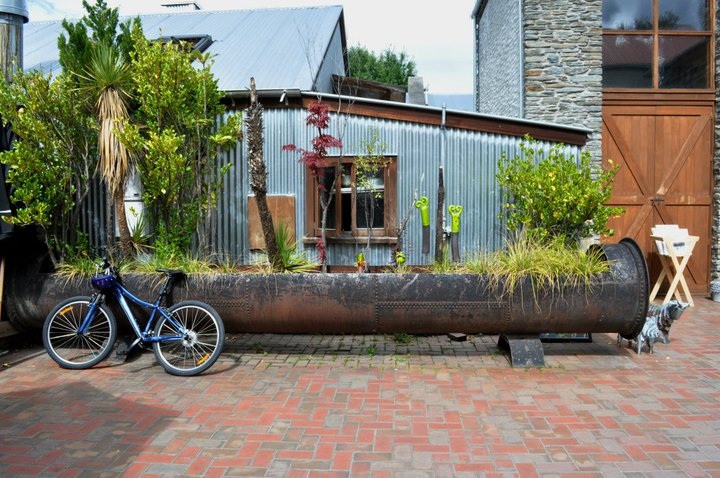













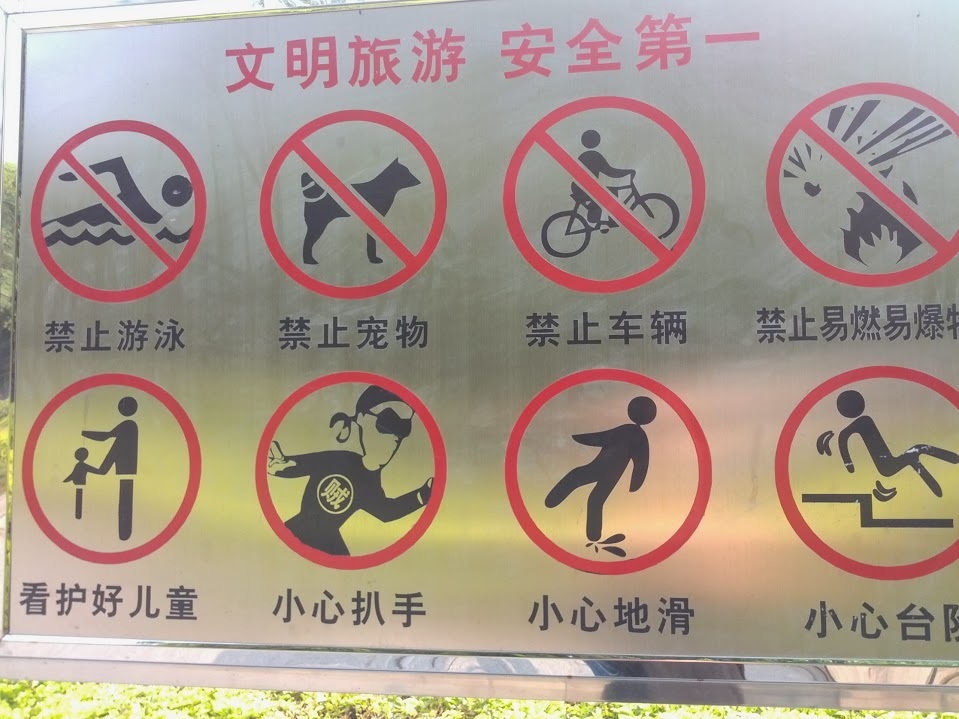



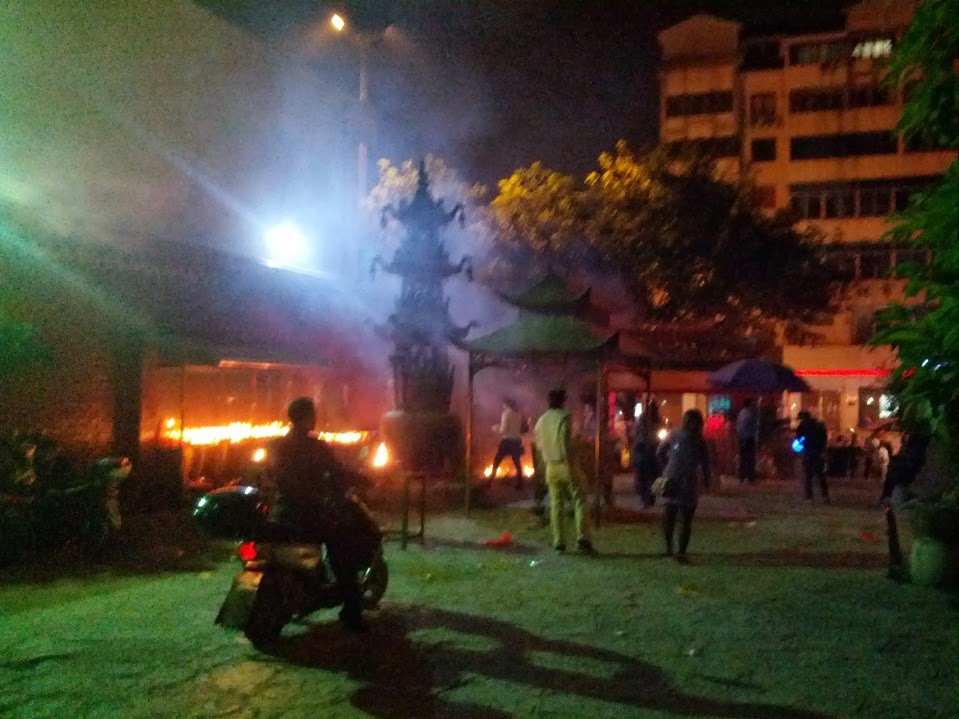





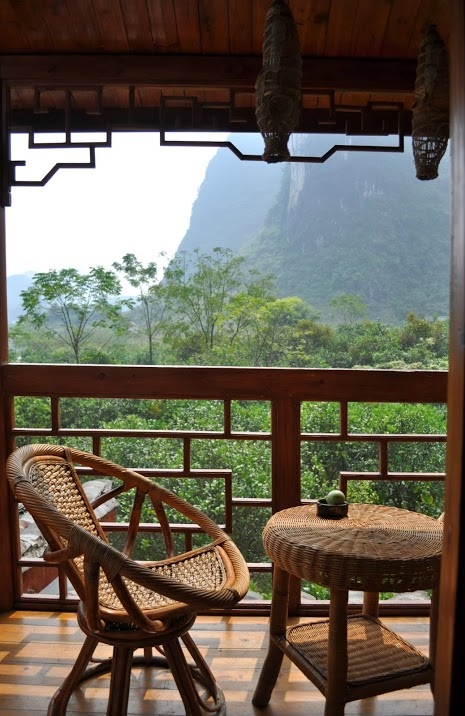

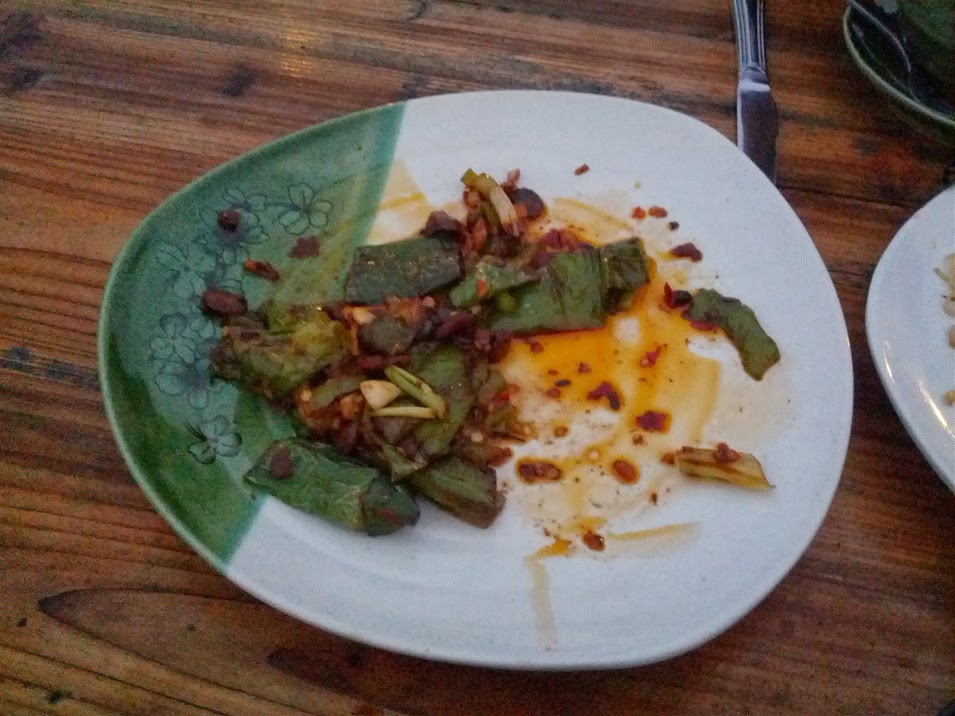


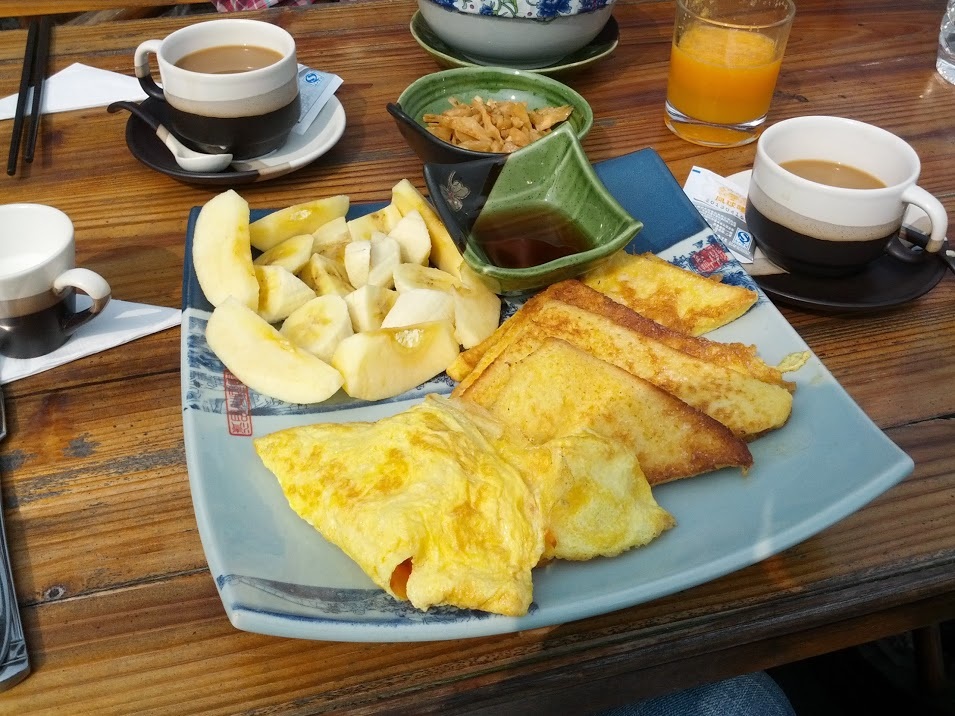


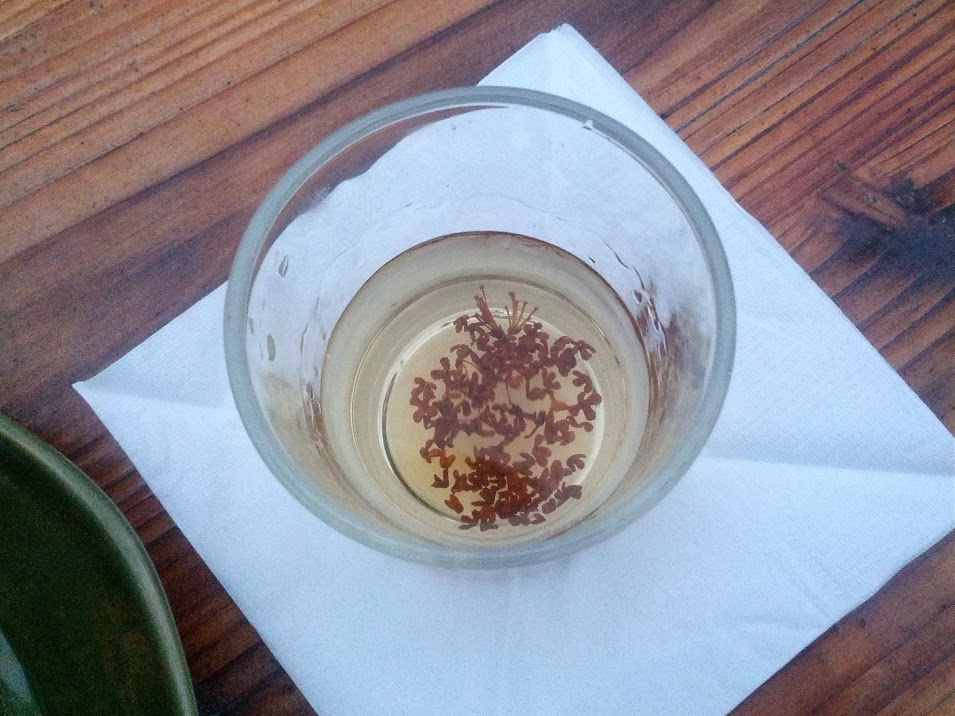





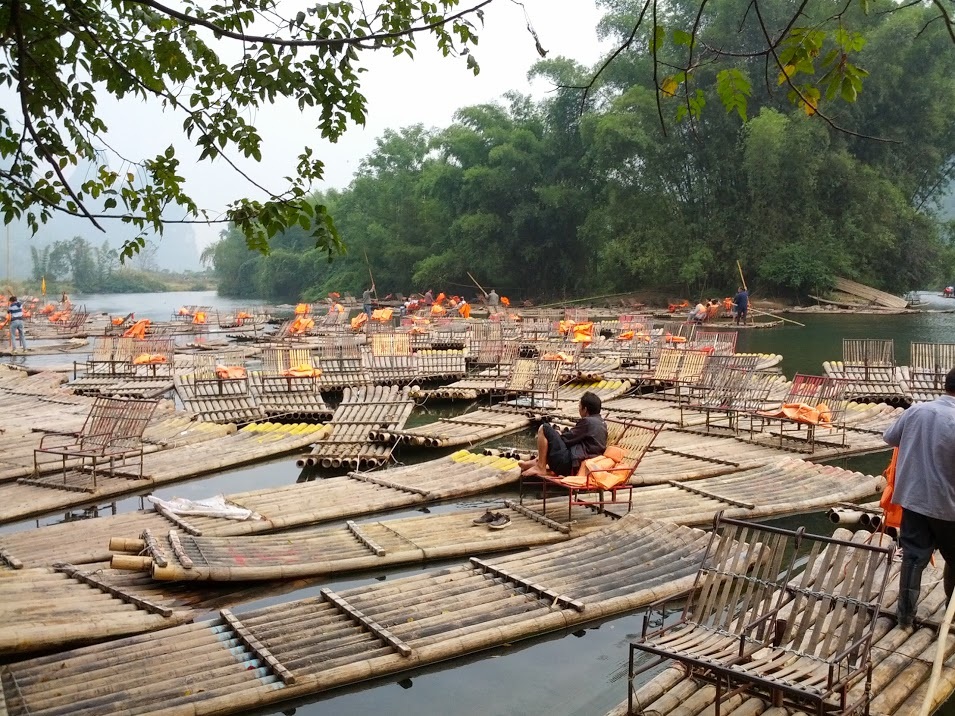
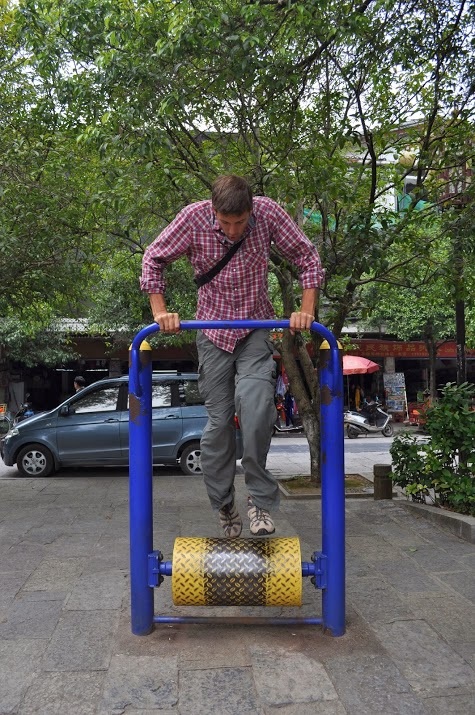



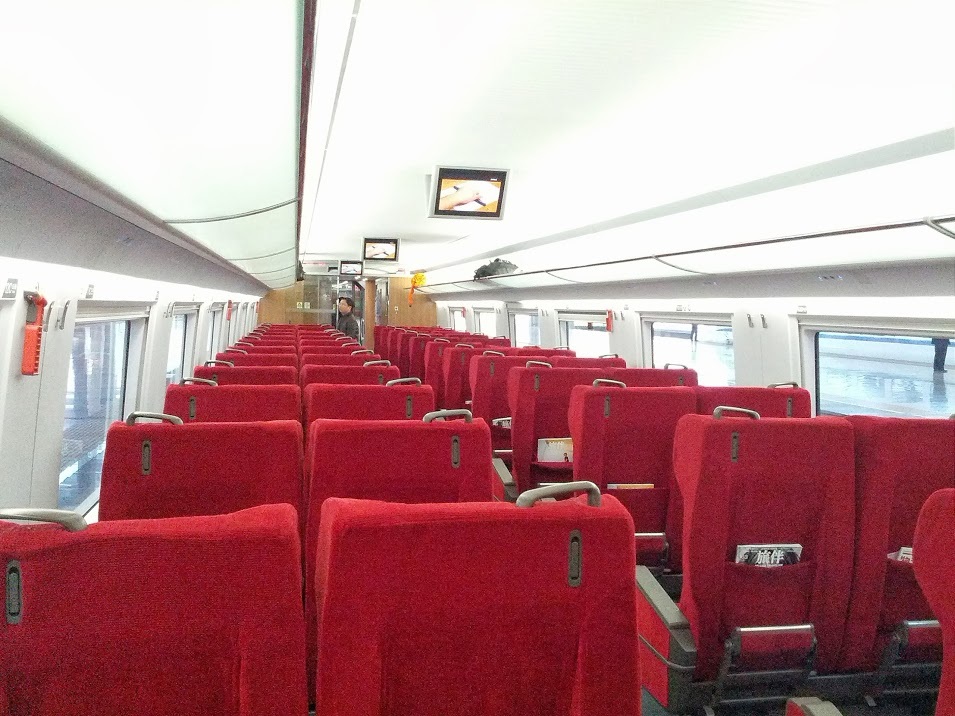
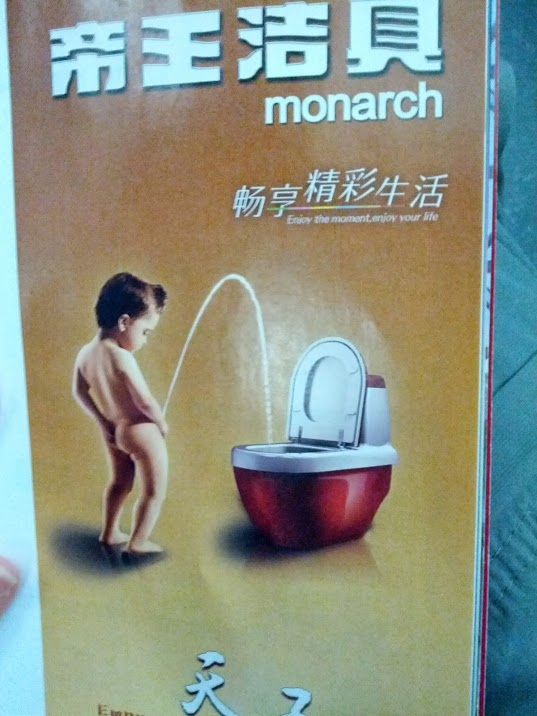













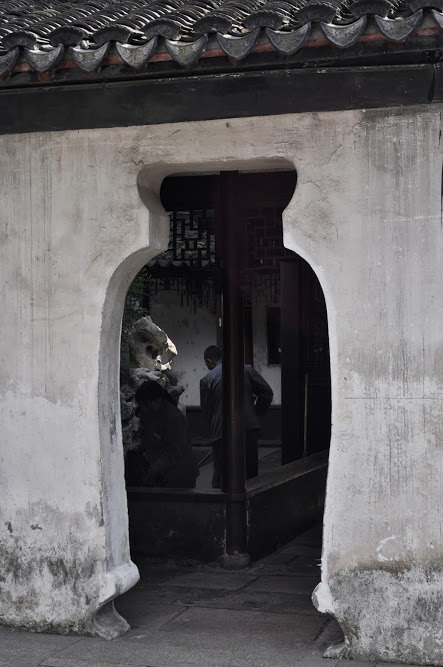







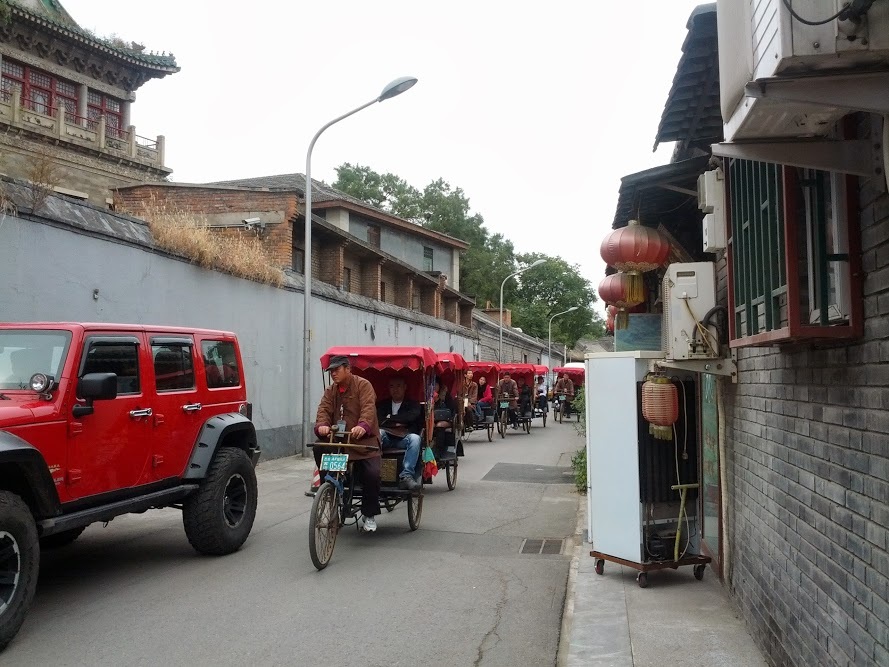




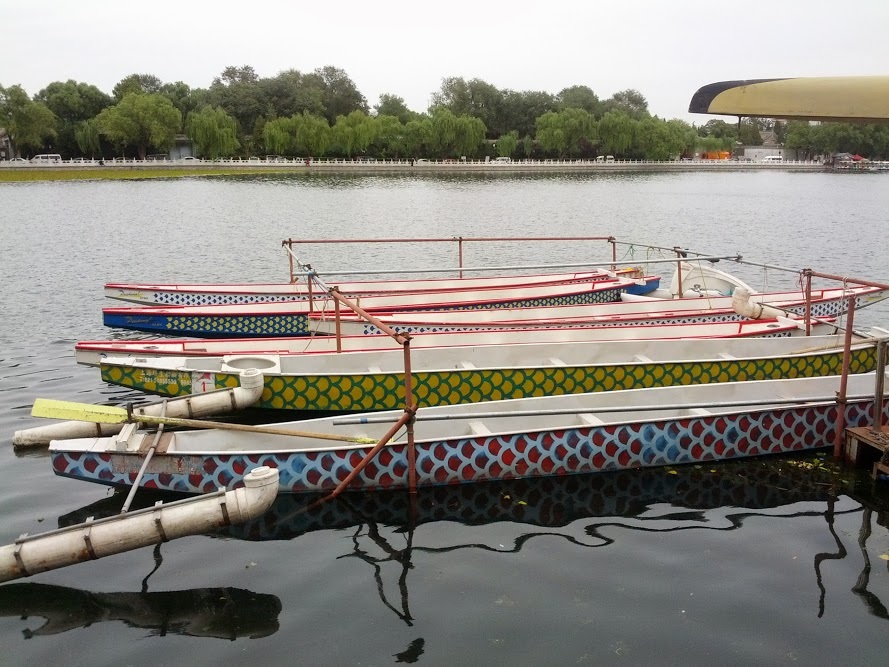




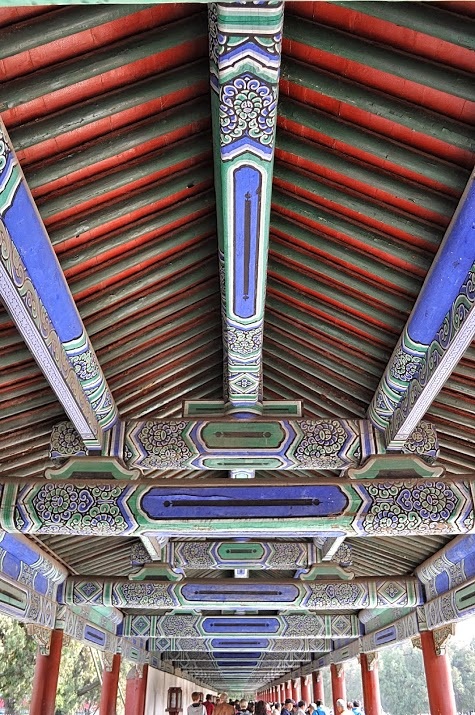






 RSS Feed
RSS Feed
